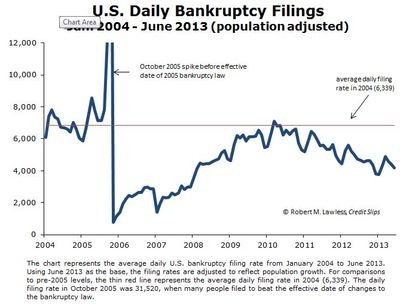Private Funds and Bankruptcy Credit Slips
Post on: 16 Март, 2015 No Comment

Private Funds and Bankruptcy
posted by Michelle Harner
As the financial reform bills make their way through committee conference, I thought I would take this opportunity to reflect on the activities of private equity firms and hedge funds in bankruptcy. (For those of you interested in the bills’ efforts with respect to credit rating agencies, see my post here at Maryland’s new faculty blog.) Although the financial reform bills provide for some regulation of private funds (see here  and here ), some argue that the proposed measures are meaningless because of, among other things, exemptions and enforcement issues (see here and here ). Others argue that even these measures hinder private funds’ business models (see here ). Irrespective of your views on this debate, it is clear that the bills do not address the challenges posed by private funds in the distressed debt context.
Investing in distressed debt is not a new investment strategy, but private funds have been pursing it with increased vigor in recent years. And they have been doing so quite successfully. These funds generally yield above-market returns, and during the 1999-2004 economic bubble/burst, they averaged double-digit returns, including 30 percent for the 2002 funds. The most recent recession has likewise provided ample opportunity for distressed debt investors. These opportunities are likely to continue for the next several years, as U.S. companies have about $600bn. of leveraged loans to refinance. between 2011 and 2014.  (See here and here .)
Distressed debt investing generally involves a private fund purchasing the debt of a troubled company and then exploiting the leverage associated with that debt instrument when the company defaults or is about to default on the underlying obligation (see here and here ). Some of these investors resemble pure traders and primarily seek to flip the debt for a quick return. Others are, however, using this investment strategy to influence corporate governance or make a control play for the company. (For data on investment strategies, see here .) These investors also are increasingly willing to extend postpetition loans (i.e. DIP financing) to troubled companies, often with the intent to credit bid the debt or otherwise convert it into equity to gain control of the company. As one commentator observed. Investors in loan-to-own deals may earn an 18 percent return on the financing, plus get equity, compared with the potential for 12 percent returns and no equity on DIPs.
Now, I am not against private funds earning positive returns for their investors—that is of course the primary objective of for-profit endeavors. I also believe that these investors frequently provide much-needed liquidity to troubled companies; liquidity that otherwise would be unavailable and that can provide a second (or third, etc.) chance for the company to the benefit of all stakeholders. I am, however, concerned about the unlevel playing field on which these investors operate in many instances.
Troubled companies often do not know who holds their debt until it is arguably too late, e.g. a default, potential default or bankruptcy. Distressed debt investors can purchase the bank or bond debt of a troubled company on the secondary market and have no disclosure obligations. In fact, they can amass a substantial majority of the company’s fulcrum debt security (i.e. the tranche of debt in the capital structure that exceeds the company’s enterprise value; it is essentially like equity in the company) without telling the company or those who believe they are the company’s true equity holders.

Why does it matter? Typically the fulcrum security holders have significant bargaining power at the restructuring negotiation table and can force an exchange of their debt into the equity of the reorganized company. Moreover, if the investors purchased the debt with this intent, they arguably have an incentive to depress the value of the company so that junior debt holders and equity holders are extinguished. These investors generally want a low valuation in bankruptcy and then high valuation upon emergence, so that the reorganization value flows to them rather than junior holders.
As we consider financial reform and the impact of private funds on our economy, I think we need to consider the funds’ distressed debt investment strategies. Some focus has been placed on disclosures required under U.S. Bankruptcy Rule 2019 in the context of ad hoc committees (see here. here  and here ), but those disclosures generally come after the fact and only with respect to group representations. The disclosures do not relate to prepetition activities (when many critical decisions are made regarding the company’s restructuring efforts) or the issue of empty voting in the context of plan confirmation. As such, I currently am exploring ways to facilitate more timely and meaningful disclosures (while recognizing and trying to protect the proprietary interests of funds) in my current work in progress titled, Activist Distressed Debtholders: The New Barbarians at the Gate?
Notably, I do not think that the investors are the only responsible party in the new restructuring landscape. I also think the boards and management teams of troubled companies need to be more sensitive to, and proactive on, these issues and consider potential loan-to-own strategies when negotiating debt instruments (see here ). Obviously, management has more bargaining power earlier in the game, suggesting the need for more aggressive and thoughtful risk management and solvency deliberations.
In sum, I think we need to reflect on the role of distressed debt investors in corporate restructurings and seek to better define their role by anticipating and planning for their seat at the negotiating table.














